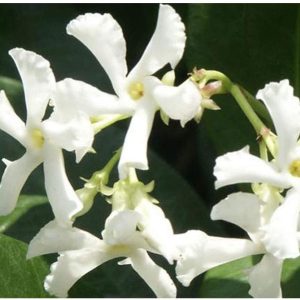Delightful Diascias
Flowering plants

Delightful Diascias
Ten years ago diascia varieties made a stunning debut into the world of gardening and are now international garden favourites.
This beautiful flowering plant was virtually unheard of a few years ago, but when plant growers started breeding crosses and hybrids in a variety of sizes and colours, it became an overnight success. There are over 70 species, all indigenous to South Africa, and almost all are perennials. The new generation of garden diascias have their origins in the cross breeding of these plants.
The delicate flowers are 1cm in diameter, but bloom in such profusion that that plant gives masses of colour. They bloom all summer long if conditions are relatively cool, so in very hot gardens plant diascias in partial shade. In autumn they bloom profusely, adding colour to the garden after most flowers are finished. All diascias have small, slightly oval leaves dark green in colour. Some varieties are upright and compact, while others are trailing plants. Their height varies from about 15cm to 30cm, and they can spread up to 45cm. Most diascias tolerate moderate frost. They are easy to grow and disease resistant, and spring is the time to plant them.
For a long lasting and floriferous display take the following steps :
- Plant in well-drained soil in full sun or semi-shade
- For vigorous growth and loads of colour, plant in compost-rich soil and fertilise regularly with liquid fertiliser, or granular fertiliser high in potassium sprinkled at the rate of a handful (60g) per square metre.
- When used in a border, fertilisation twice a year in late spring and summer is usually sufficient.
- If planted in containers where their roots are a little more restricted, fertilise every three weeks. Fertilise lightly, as too much fertiliser will produce more foliage than flowers.
- Water regularly. Although the plants can survive periods of drought, this leads to flower drop and scruffy growth.
- If plants get tired and leggy, cut off old flower stems and trim back to encourage new growth.
- Routine deadheading will extend the flowering season.
- Diascias propagate easily from cuttings. You can also dig out chunks of diascia at any time, or pull sprigs or tiny divisions from them and, provided they have roots, simply replant.
- In cold regions cover outdoor diascias in winter with a bulky mulch or conifer clippings for extra protection.
Design ideas with diascias
Diascias can be used in a variety of ways :
- As a ground-cover. Choose low-growing spreading varieties and plant them close together.
- Under roses. An excellent choice as they grow in sun while tolerating some shade, and will enjoy the moist conditions.
- In a border. Diascias make a wonderful show near the front of beds and borders. For a pretty effect combine diascias with plants with silvery foliage, such as lamb’s ear (Stachys byzantina), and with plants with pink or blue blooms, such as marguerite daisies, penstemon or lobelia. Choose upright-growing varieties.
- In hanging baskets Choose varieties with a trailing growth habit.
- In containers. Use alone or in combination with other plants such as petunia, lobelia, pelargonium, Swan River daisy, felicia or osteospermum.
- Spilling over retaining walls. Choose varieties with a trailing growth habit.
- In a gravel garden. The delicate foliage contrasts well with gravel.
- In a meadow garden. The delicate blooms suit this type of planting.
A rainbow of colours
A host of Diascia species and cultivars is available this spring. The heat-tolerant 40cm tall semi-trailing ‘Whisper’ series and Diascia ‘Salmon Supreme’ are excellent for containers, hanging baskets and trailing over the edge of raised beds. The species D. integerrima and D. barberae, the Diamonte, Sun Chimes, Wink and Chumbles series are upright growing and suitable for borders. The Genta series has slighter larger blooms.
Choose from the following :
- White – Genta ‘White’, Chumbles ‘White’.
- Lavender – Whisper ‘Lavender Pink’, Diamonte ‘Lavender Pink’, Sun Chimes ‘Lavender’,
- Chumbles ‘Berry’, Wink ‘Lavender’.
- Light pink – ‘Darla Light Pink’, Chumbles ‘Pipa’, ‘Blush Improved’, Genta ‘Pink’.
- Pink – Diascia integerrima, Diascia barberae, Chumbles ‘Norma’, Genta ‘Dark Pink, Wink ‘Pink’.
- Rose – Diamonte ‘Coral Rose’, ‘Darla Rose’.
- Peach – Chumbles ‘Dee’, Chumbles ‘Hester’.
- Coral – ‘Salmon Supreme’, Genta ‘Dark Coral’, Whisper ‘Salmon Red’, Chumbles ‘Wendy’.
- Red – Genta ‘Antique Red’, Whisper ‘Cranberry’, Sun Chimes ‘Red Delight’.
- Apricot – Diascia barberae ‘Apricot’, Diamonte ‘Apricot’, Sun Chimes ‘Apricot Delight’, Chumbles ‘Kerryn’, Wink ‘Light Apricot’.
- Orange – Whisper ‘Pumpkin’, Sun Chimes ‘Terracotta’, Genta ‘Orange’.




